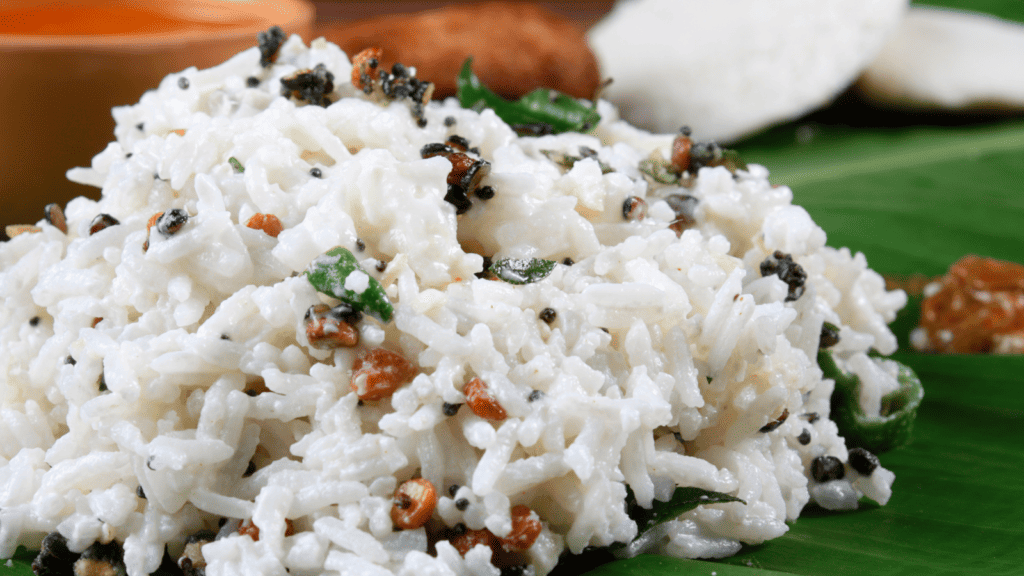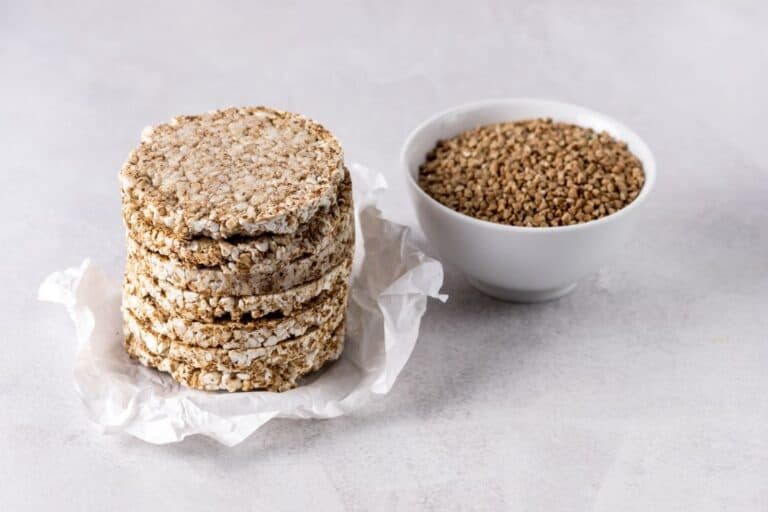Traditional Curd Rice Recipe
If you’re in the mood for a simple and delicious dish, look no further than the Traditional Curd Rice Recipe. This delightful combination of plain yogurt and rice is easy to make and offers a refreshing and tangy flavor that will leave you wanting more.
Topped with juicy pomegranate seeds, this dish is a feast for the taste buds and a visual treat. So, gather your ingredients and get ready to experience the comforting taste of curd rice at its finest.
Ingredients
To make the traditional curd rice, you will need the following ingredients:
Basmati Rice
For the perfect texture and fragrance, basmati rice is the ideal choice.
Curd (Plain Yogurt)
The main ingredient of curd rice is plain yogurt. Make sure to use fresh and thick yogurt for the best results.
Water
Water is needed to cook the rice and adjust the curd rice’s consistency as desired.
Salt
A pinch of salt is added to the curd mixture to enhance the flavor.
Pomegranate
Pomegranate arils are visually appealing and add a refreshing and slightly tangy taste to the curd rice.
Curry Leaves
Curry leaves are a common ingredient in South Indian cuisine. They impart a unique aromatic flavor to the dish.
Mustard Seeds
Tempering the dish with mustard seeds adds flavor and crunchiness to every bite.
Urad Dal (Split Black Gram)
Urad dal is used in the tempering process to give the curd rice a nutty flavor and texture.
Green Chili
For a hint of spiciness, chopped green chilies are added. Adjust the quantity according to your preference.
Ginger
Freshly grated ginger adds a zing to the curd rice and complements the flavors of other ingredients perfectly.

Preparation
Before diving into the step-by-step instructions, let’s get an overview of the preparation process.
Cooking the Rice
First, the basmati rice must be cooked until it is fluffy and tender.
Preparing the Curd Mixture
While the rice is cooking, the curd mixture is prepared by whisking it, adding water to adjust the consistency, and seasoning it with salt.
Tempering the Ingredients
A tempering of mustard seeds, urad dal, curry leaves, green chili, and ginger is prepared separately to elevate the flavors.
Mixing the Rice and Curd
Once the rice is cooked and cooled, it is gently mixed with the curd mixture to coat the grains evenly and allow the flavors to meld.
Adding Pomegranate and Garnish
Lastly, fresh pomegranate arils are added to the curd rice for color and flavor. It is then garnished with curry leaves and grated ginger before serving.
Step-by-Step Instructions For Curd Rice
Now, let’s go through the step-by-step process of making traditional curd rice.
1. Cooking the Rice
Start by rinsing the basmati rice thoroughly to remove any excess starch. Then, soak the rice in water for about 20 minutes. Drain the rice and add it to a pot with enough water to fully submerge it.
Bring it to a boil and then reduce the heat to low. Cover the pot and let the rice simmer gently for 15-20 minutes or until it is fully cooked and tender. Once cooked, drain any excess water and let the rice cool.
2. Preparing the Curd Mixture
In a mixing bowl, whisk the curd until it is smooth and creamy. Gradually add water while whisking to achieve the desired consistency. Next, add a pinch of salt and mix well.
To further enhance the flavor and texture, gently mash the curd using a spoon’s back. Finally, refrigerate the curd mixture until you are ready to use it.
3. Tempering the Ingredients
Heat some oil in a small pan over medium heat. Once the oil is hot, add mustard seeds and let them splutter. Then, add urad dal and sauté until it turns golden brown.
Next, add curry leaves, chopped green chili, and grated ginger. Saute the ingredients for a minute or two until the flavors are released, and the curry leaves become crisp. Remove the pan from heat and let the tempering cool.
4. Mixing the Rice and Curd
Take the cooled rice and gently fluff it with a fork to separate the grains. Gradually add the curd mixture to the rice, tossing it gently to coat each grain evenly.
Adjust the consistency by adding more curd or water, depending on your preference. Allow the flavors to blend by letting the curd rice rest for 10-15 minutes.
5. Adding Pomegranate and Garnish
Before serving, add fresh pomegranate arils to the curd rice and gently mix to distribute them evenly. The juicy and slightly tangy pomegranate arils will add a delightful texture and flavor.
To garnish, sprinkle some curry leaves and grated ginger on top for an appealing presentation.
Tips and Variations
Here are some tips and variations to enhance your curd rice:
Using Leftover Rice
If you have leftover cooked rice, you can still make delicious curd rice by simply reheating it and following the same steps to mix it with the curd mixture and tempering.
Adding Grated Carrots or Cucumber
For added freshness and crunch, you can include grated carrots or finely chopped cucumber in the curd rice. These vegetables provide a refreshing element and enhance the dish’s nutritional value.
Adding Chopped Coriander Leaves
Consider adding some freshly chopped coriander leaves for a burst of herbaceous flavor. Mix them into the curd rice along with the tempering for an added layer of freshness.
Adding Roasted Cumin Powder
If you enjoy earthy and warm flavors, try sprinkling roasted cumin powder over the curd rice. This will elevate the taste profile and add a delightful aroma.
Enhancing the Flavor with Asafoetida
To give a unique and distinct flavor to the curd rice, add a pinch of asafoetida (hing) to the tempering. Asafoetida lends an umami and slightly onion-like flavor, enhancing the overall taste experience.
Using Sour Curd for a Tangier Taste
If you prefer a tangier taste, choose sour curd instead of plain yogurt. The slightly tart and spicy flavor pairs perfectly with the creamy curd rice, creating a delightful combination of tastes and textures.
Health Benefits
Apart from its delicious taste, traditional curd rice offers several health benefits:
Probiotic Benefits
As curd is a rich source of probiotics, curd rice is an excellent way to introduce healthy bacteria into your gut. Probiotics support digestive health and may enhance the immune system.
Digestive Aid
Curd rice is easy to digest and can relieve stomach discomfort or indigestion. Combining rice and yogurt helps soothe the digestive system and can be a comforting meal when you feel unwell.
Cooling and Soothing
In hot climates or during periods of excessive heat, curd rice can provide a cooling and soothing effect on the body. The combination of yogurt and rice helps regulate body temperature and refresh you.
Vitamin C and Antioxidants from Pomegranate
Adding pomegranate to curd rice enhances the flavor and provides a dose of vitamin C and antioxidants. Vitamin C helps boost immunity, while antioxidants protect against cellular damage.
Nutritional Benefits of Yogurt
Yogurt is a good source of calcium, protein, and vitamins like vitamin B12 and riboflavin. Including yogurt in your curd rice adds these nutrients to your meal and contributes to a balanced diet.
In conclusion, traditional curd rice is a delightful and versatile dish that can be enjoyed as a main course or a side dish. It offers a perfect balance of flavors, textures, and health benefits.
With this comprehensive recipe, you can easily create a bowl of creamy and flavorful curd rice in the comfort of your kitchen. So go ahead, give it a try, and savor this classic South Indian dish!
Try out this gluten-free recipe, Paneer Capsicum With Indian Cottage Cheese.

Born and raised in a family of foodies, Georgia’s passion for cuisine was nurtured from a young age as she learned the intricacies of flavor and texture from her grandmother’s kitchen. As an adult, this early fascination blossomed into a full-fledged love affair with the culinary world.








